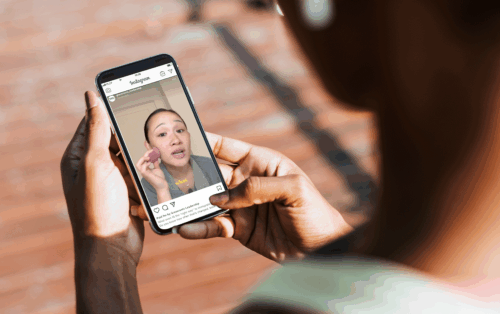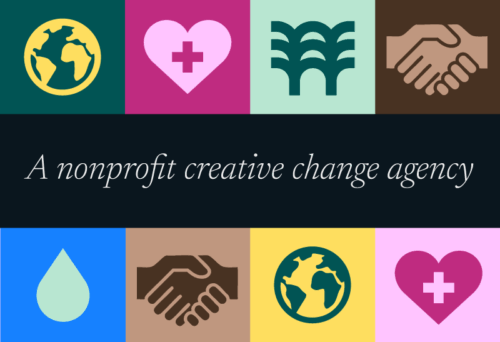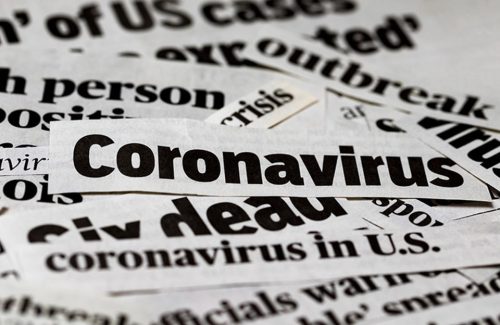
We here at Resource Media have been fielding numerous questions from our partners over the past three weeks about whether to responsibly uplift their news to the media or to their supporters, or to hold off on pushing out messages and content that advances their work, in light of the current coronavirus pandemic.
As news of the global pandemic was rapidly escalating, our Resource Media colleague Refugio Mata posed the astute question to all of us here, “Are you feeding fear and panic, or resilience?” This has been our North Star for communications, especially when we raise threats and challenges in our communications: Are we further stoking fear and panic? How can we instead foster resilience by coming to the table communicating and elevating solutions?
In this same spirt of feeding resilience, we want to share with you, our partners, our reflections on how to navigate this rapidly changing media and larger communications landscape as the focus of the media and concerns of the public rightfully center around the COVID-19 outbreak:
To overcommunicate or under-communicate, that is the question.
Our overall message is to keep communicating. Any media-directed efforts that don’t have a direct tie-in to the pandemic (more on this later) may need to take a backseat, but direct organization-to-supporter emails and social media may be where it’s at for you. Your supporters want to hear from you , and you may be their welcome break from the news of the hour when they tune into your social media feed!
A number of groups have sent emails out to their lists informing them of what they are doing that will immediately take effect; e.g., staff are now all working remotely, Event X has been rescheduled or gone virtual, etc. Many have also amplified the CDC’s guidance – as much as you can “signal boost” local public health department, the CDC, NIH or other public health guidance as part of your organization’s communications to its members, the better.
If you haven’t already sent an email informing your members of your staff’s remote working plans, you may be asking yourself, should we have? The answer is, only if relevant to your members. For example, the news that your team is working from home is relevant if your office gets a lot of foot traffic from volunteers. If you expect a delay in responding to inquiries from the public while your team transitions to a remote office structure or modified work schedules given increased demands at home, you may also want to consider a communications touch.
Begin by acknowledging what is top of mind for your audiences.
Know your audience. Understand that their paramount concerns today may very well not be your organization’s concerns. Meet people where they are. Everyone we know is scrambling with the new normal – from sheltering in place to trying to work without childcare. Many of us are worried about family and friends with health vulnerabilities, or who have lost their jobs.
Take special care with your tone in your communications with supporters, volunteers and others. We need to avoid sounding tone-deaf by authentically acknowledging people’s foremost concerns before pivoting to our issues. Road-test your attempts at humor or a light tone, or an attempt to bridge your issue with the pandemic with a few people to see if it lands well with those who may be scared or anxious.
Ask yourself, is this your issue’s moment in time, or not, for the media?
If your work has no direct connection to the current pandemic, factor in that you may get more eyeballs by going to the media with your story ideas several months from now. Here’s the reality at news desks in the Pacific Northwest and nationally: Roughly 80-90% of current news coverage is related to the global pandemic. One reporter with whom we work at WIRED Magazine noted that coronavirus-related stories comprise 90% of their coverage at present. Non-COVID-related content is simply not getting clicks, there is minimal interest in other news. With sports events cancelled, even the sports desk at USA Today is now 100% on the pandemic beat. Many journalists have been put on the coronavirus beat full-time for the next several weeks. They have told us that there has to be a logical connection to the pandemic for them to even consider a pitch at present.
Reporters are constantly looking for new angles to the pandemic story.
If you have relevant, solutions-oriented news, now is your time to grab the mic! (Avoid creating contrived links to the pandemic, though; audiences will quickly see through that.) Reporters are on the hunt for new angles to the pandemic story. Sports reporters are writing stories about how to practice social distancing in parks and trails. Food writers are writing about pantry-driven recipes and how to shop for food safely. Education writers are writing about distance learning programs and resources for home schooling. Just about every facet of our day-to-day lives have changed, and every beat at every media outlet is serving up what the public is looking for.
Delay surfacing problems unrelated to the pandemic.
Avoid alarmist or negative rhetoric. Our mental bandwidth to hear and learn about more problems is at max capacity. If you are highlighting a problem that will hit in the future, or that will be perceived as minor relative to the profound health and economic issues we face, trying to garner attention now may raise eyebrows. We recommend delaying your efforts until the public emergency has ebbed. If there’s some urgency in timing around your issue (a key decision or development looming) then you are on safer ground, but tone is important.
A small window is open for unrelated, uplifting news.
One reporter told us that his editor said: Let’s leave room for one non-pandemic-related story per day to give our audience some relief and calming news. The writing between the lines there is that they want that story to be a positive, uplifting, not a sky-is-falling story! Gently inquire if your target news outlet is looking for a light, feature-y, good news story to balance out the almost non-stop coronavirus coverage. Be explicit – to avoid sounding clueless as to what is happening right now – that you know the coronavirus is dominating headlines and that you are offering your unrelated story if they are looking for content filler to give audiences a relief from the pandemic news.
A higher bar for policy milestone stories and other breaking news.
If there are policy milestone stories, or other relevant breaking news, yes, the media might still cover them. However, the bar is much higher for those stories than 3+ weeks ago.
Words to embrace, words to replace.
Just as people are filtering out some news and embracing other news, there are words they are embracing and words that are due for replacement. H/t to Big Duck for sharing some of their insights. Here are a few examples:
Words to Embrace: Protect, ensure, heal, embrace
Words to Replace: Fight, battle, tackle
Rationale: People are not in a space right now to fight anything other than a crisis immediately before them. Reduce violence and war-associated language that feeds fear (even on a subconscious level) felt by audiences. Offer up nurturing language instead.
Words to Embrace: We, us, ours
Words to Replace: I, me, mine
Rationale: Avoid the me-first instinct that takes over in emergency situations, and convey the values of community, collective action and collective impact, i.e. “we’re in this together.”
Words to Embrace: People who have COVID-19
Words to Replace: COVID-19 victims or cases
Rationale: Use people-first language, avoid defining people by the disease or dehumanizing them. The World Health Organization has a guide for talking about the coronavirus.
Social connections in the age of “social distancing.”
Utilize social media to communicate with your audiences. People are going online like never before, but again, be aware of your supporters’ appetite for heavier news at this time. Look at your social media analytics to see what they are most hungry for. It may simply be connection to others. Others may be looking for opportunities to help, not feel helpless; you may see higher response rates to your calls to action. Interestingly, we just looked at research showing that people are turning to familiar content for their TV and film entertainment. Think of your social media content as “comfort food” for your followers who are tuning in to get a break from the outside world.
Strengthen relationships with your allies.
Now is an opportunity for deeper relationship building. Reach out and offer communications help to allies with whom you would like to build real, not transactional, relationships. Remember that nurse who spoke at your press conference last year? Or the small business owner who offered a quote in your media statement? How are they doing during this crisis? What can you do for them with no benefit to you or your organization? Ask them what they need; e.g., attention to a certain crack in the system, or targeted help to their sector? Offer to share their story with the media, whether or not it is a “priority” of your organization. Now is a great time to cultivate relationships and help others get through these tough times.
Who is the (s)hero of the hour?
What is trending? When curating the stories you want to tell, be they for the media or for your supporters, look for and then highlight “(s)heroes.” This could be one of your supporters, or a staffer in the field. We love hero stories because they are inspiring and hopeful. Many of our public health clients are elevating doctors and nurses as the heroes of the hour; everyone wants to celebrate those on the front lines, you do not need to be a public health agency to applaud health care professionals. There’s a market for heroes right now!
As recently as February it seemed that much of the American public was turning their backs on experts, and only seeking guidance and recommendations from friends. Great news: experts are back in vogue! Trust in health professionals is sky-high. A recent poll showed that nonprofits and foundations have climbed the charts as well in terms of people’s trust levels to be doing what’s right by all of us during this pandemic.
Offer thanks.
Now is a great time to offer gratitude to the workers, service providers and “helpers” who are doing so much for others, at no small risk to themselves. In the big picture, it’s timely to remind folks of the value of science, experts, and institutions that knit society together. Remind folks of the importance of being good neighbors. After all, we are all in this together.
Use this moment to shift the narrative on your issue.
In the long-term, we see opportunities presented by this crisis to shift the narratives across many of our issues. For example, in the absence of federal leadership over the last 3+ years, many of us have pushed the theme of states and local government leading the way on our policy priorities. Elevate them as heroes for stepping into the vacuum. We just saw this story on how green energy could help get us back on the road to economic recovery. Or, is your work based in science? The tragedy that is unfolding illustrates what happens when science is side-lined or under-invested, harming countless people and communities.
Our only caution is that when trying to connect the dots to the need for systemic changes related to your cause, take great care and think deeply about the risks of coming across as insensitive to the current health and economic crises; as with all of our advice above, be highly-attuned to timing, tone and sequencing of your communications.
Be Mr. Rogers’ mom.
“When I was a boy and I would see scary things in the news, my mother would say to me, ‘Look for the helpers. You will always find people who are helping.’”
— Mr. Rogers (h/t to Sean Gibbons, at the Communications Network)
We in the nonprofit community are all in some ways Mr. Rogers’ mom. We can serve as that beacon of hope, a place of comfort and positivity in our communications to the world outside.
More Insights and Resources


Rooted in who we are: Check out our new look and website

